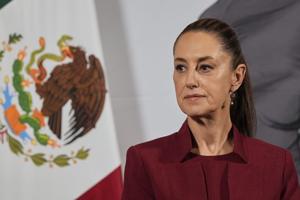The National Herald case centres on allegations of financial impropriety involving the transfer of ownership and control over the assets of Associated Journals Limited (AJL), a company historically tied to the Congress party, to Young Indian Ltd (YIL), a private entity linked to top Congress leaders. The core of the case is the suspicion that the vast real estate holdings of AJL, estimated at over Rs 2,000 crore, were taken over by YIL through a series of questionable financial manoeuvres that allegedly lacked transparency and bypassed proper procedures. AJL, which once published the National Herald newspaper founded by Jawaharlal Nehru, was originally established as a public company with thousands of shareholders, many of whom were freedom fighters.
It stopped printing in 2008, facing major financial difficulties. In 2010, the Congress party is said to have extended loans to AJL, totalling over Rs 90 crore. The following year, in 2011, these loans were allegedly assigned to YIL for a nominal amount of Rs 50 lakh, thereby effectively transferring control of AJL’s assets to the new entity.

YIL was set up as a not-for-profit company under Section 25 of the Companies Act. Sonia Gandhi and Rahul Gandhi each held a 38% stake, while the remaining shares were with Congress leaders Motilal Vora and Oscar Fernandes. ALSO READ: Cases against 5,000 Congress members over ‘violent’ protest in Odisha The Enforcement Directorate argues that YIL carried out no charitable work, in contradiction to its stated non-profit status, and that its true purpose was to facilitate the acquisition of AJL’s real estate through backdoor channels.
This alleged misuse of political position and party funds forms the crux of the ongoing legal scrutiny. Origins of the National Herald The National Herald was launched in 1938 by Jawaharlal Nehru and fellow freedom fighters to voice liberal and nationalist views. It was published by AJL, which also brought out Hindi and Urdu dailies—Navjeevan and Qaumi Awaz.
After decades of publication, the newspaper ceased operations in 2008, reportedly due to financial strain and debts of over Rs 90 crore. What sparked the case? In 2012, BJP leader and lawyer Subramanian Swamy filed a criminal complaint accusing Sonia Gandhi and Rahul Gandhi of financial misconduct. According to him, the Gandhis used YIL—founded in 2010 and where they jointly owned a 76% stake—to acquire AJL’s assets, valued at more than Rs 2,000 crore, for just Rs 50 lakh.
These properties, located in prime areas across Indian cities, were originally meant for journalistic activities. Swamy alleged that a loan earlier extended by the Congress party to AJL was improperly converted into equity and transferred to YIL, enabling a de facto takeover. Several former AJL shareholders claimed they were not consulted or notified during this process.
ALSO READ: Amid talk of Islamic representation, India, G4 reject proposals to allocate UNSC seats on religious basis Role of the Enforcement Directorate The Enforcement Directorate (ED) began investigating the matter in 2014 after a Delhi court took cognisance of the case. On 9 April, the ED filed a chargesheet at Rouse Avenue Court, accusing Sonia Gandhi, Rahul Gandhi, Sam Pitroda, and Suman Dubey of criminal conspiracy and money laundering under the Prevention of Money Laundering Act (PMLA). The agency claimed that YIL had no charitable operations despite its non-profit status and had evaded over Rs 414 crore in taxes.
Congress party’s response Congress has dismissed the allegations as baseless and politically motivated. It argues that the transactions were legal and aimed at reviving AJL’s newspapers rather than enriching individuals. The party has accused the government of using investigative agencies for political vendetta.
Why have Sonia and Rahul Gandhi been named in the chargesheet? The ED’s chargesheet identifies Sonia Gandhi as Accused No. 1 and Rahul Gandhi as Accused No. 2, based on their majority stake and managerial control in YIL.
The agency alleges that they were key decision-makers in a conspiracy to siphon off AJL’s properties and misuse Congress funds. The charges are supported by a 2017 Income Tax Department assessment that flagged tax evasion and irregularities in the asset transfer..
Top

What is the National Herald case? Why has ED chargesheet named Rahul Gandhi, Sonia Gandhi? Explained

The National Herald case implicates Congress leaders Sonia and Rahul Gandhi in alleged financial impropriety linked to AJL's asset transfer to Young Indian Ltd, stirring legal scrutiny.











